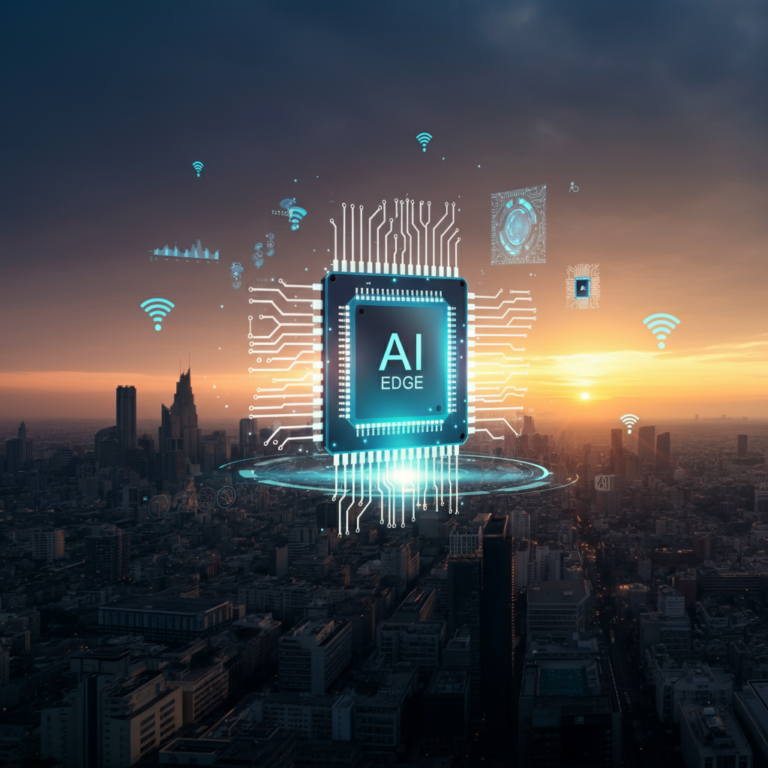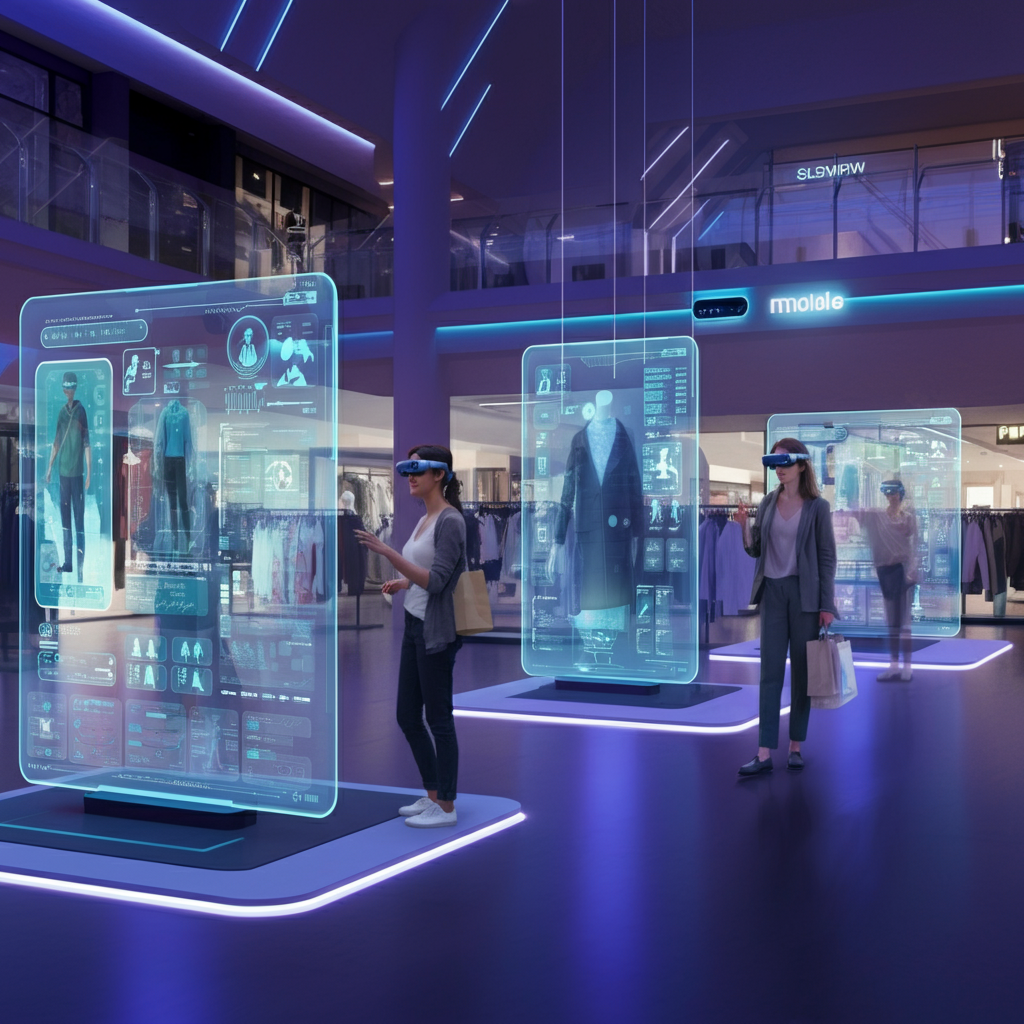Best use cases of Edge AI: One of the most revolutionary technical developments of the twenty-first century is the Internet of Things (IoT), which connects gadgets smoothly and makes spaces smarter and easier to use.
When artificial intelligence (AI) is included, the possibilities are endless. However, while cloud computing has been a major component of traditional AI-based solutions, Edge AI is a groundbreaking new technology that quickly changes how the Internet of Things and smart gadgets function.
Edge AI is revolutionising data processing, making IoT solutions across sectors faster, safer, and more effective. Edge AI is influencing the future of everything from smart homes to medical equipment
Edge AI: What is it?
Fundamentally, Edge AI incorporates artificial intelligence into devices located at a network’s “edge.” Edge AI functions locally, on or close to the devices where the data is created, unlike cloud-based AI, which processes data in distant servers.
What distinguishes Edge AI from conventional AI?

Conventional AI systems use cloud-based centralised data processing. This entails sending data from smart devices to cloud servers, which algorithms process and return to the devices as outputs.
This method has drawbacks, including significant latency, bandwidth consumption, and data privacy issues, even though it works well for large-scale analytics.
On the other hand, Edge AI does calculations locally on edge devices such as sensors, cameras, or microcontrollers, removing the need to transfer data to the cloud. This change enables smart devices and the Internet of Things to become more effective, safe, and responsive.
Edge AI is perfect for IoT ecosystems that depend on connectivity and quick decision-making. It enables real-time intelligence right on the device.
How Edge AI Enhances IoT Performance Edge AI is addressing issues that have long plagued smart devices and linked systems, transforming IoT performance in several ways.
Best use cases of Edge AI in 2025—Quicker Processing of Data
The capacity of Edge AI to process data at its source is one of its main benefits. Edge AI reduces latency and improves real-time responsiveness by eliminating the need to send data back and forth to the cloud. This is crucial for applications like industrial predictive maintenance or driverless cars.
Decreased Latency and Instantaneous Response
For IoT devices to work well, responsiveness at the millisecond level is frequently required. To solve this, Edge AI ensures that choices and actions are made in real-time by processing data locally. For example, without waiting for cloud processing, a security camera with Edge AI may instantly detect and notify users of a break-in.
Improved Security and Privacy
Best use cases of Edge AI processes it locally instead of sending sensitive data to the cloud. This guarantees greater levels of data privacy and drastically lowers the danger of data breaches, which is crucial in sectors like healthcare and finance.
Cost-effectiveness and energy efficiency
Because edge AI doesn’t rely as much on constant connections to distant servers, it is, by nature, more energy-efficient than cloud AI. Due to its decreased reliance on bandwidth, it is also an affordable option for Internet of Things applications with stringent resource limitations.
Cloud vs. Edge AI for Intelligent Devices
The particular best use cases of Edge AI must be carefully considered when deciding between Edge AI and Cloud AI for IoT product integration.
Cloud AI Centralised Processing and Storage: Cloud AI depends on sizable off-site servers for complex calculations and data storage.
Perfect for Analysing Large Data Sets: It is appropriate for trend forecasting and historical analysis, which call for large datasets.
Principal Difficulties: high latency, higher bandwidth expenses, and possible security and privacy issues.
Decentralised Local Processing using Edge AI: Response times are optimised by processing data on the device or nearby.
Ideal for Situations in Real Time: This is perfect for applications like motion-detecting cameras or real-time traffic management that require quick decisions.
Increased Efficiency and Control: lessens reliance on the cloud, providing a more efficient and responsive method of interacting with smart devices.
Key takeaway: Edge AI is superior at real-time, low-latency operations where speed and privacy are crucial, whereas Cloud AI is better at complex jobs and large-scale data aggregation. The decision is ultimately based on the particular performance requirements of your application or IoT device.
Edge AI Applications for Smart Devices and the Internet of Things

Edge AI’s adaptability has spurred its use in a variety of sectors, enabling intelligent solutions that were previously unthinkable.
Intelligent Houses
Edge AI is revolutionising smart home technology, from voice assistants like Alexa to lighting controls and thermostats. Even in settings with poor network connectivity, it allows devices to comprehend and react to user requests in real time.
IoT in Industry
Innovation in industrial and manufacturing processes is being propelled by edge AI. Local data processing, which reduces downtime and increases productivity, is extremely beneficial for applications like process optimisation, quality control, and predictive maintenance.
Medical Care
Edge AI-enabled wearable technology and medical monitoring can deliver real-time health updates, warning patients or healthcare professionals of anomalies. While protecting patient privacy, this integration improves patient outcomes.
Automobile
Autonomous cars depend on edge AI for critical decision-making functions like collision detection and route optimisation. Smart onboard systems can improve navigation and safety by making snap judgments based on local data processing.
The Future and Difficulties of Edge AI
Despite Edge AI’s enormous promise, developers encounter several difficulties when integrating it into Internet of Things systems.
Connecting Legacy Systems: It can be difficult and expensive to update current IoT infrastructures to support Edge AI.
Standardized development frameworks are necessary. For IoT specialists, the absence of consistent standards makes the development process more difficult.
Problems with Scalability: For Edge AI to function well on a broad scale, significant improvements in processing power and hardware are required.
Notwithstanding these challenges, Edge AI has a very bright future. Due to ongoing developments in AI chips, 5G technology, and machine learning algorithms, edge AI will become more reliable and widely available in the upcoming years. Businesses that invest in these advances immediately will be competitive in their respective industries.
Reasons for IoT Developers to Join
For the Internet of Things and smart gadgets, edge AI is an intriguing new frontier. It overcomes the drawbacks of conventional cloud-based systems and ushers in a new era of intelligent connectivity by providing faster, more effective, and secure solutions.
Now is the ideal moment for IoT developers to investigate how Edge AI might improve your products and transform user experiences. In order to stay ahead of the curve, one must not only comprehend this state-of-the-art technology but also apply it to address practical problems.
Are you prepared to discover Edge AI’s full potential? Continue to learn, experiment, and create to influence tomorrow’s smart devices.
Conclusion
Edge AI is revolutionising the Internet of Things (IoT) and smart devices by enabling local data processing and real-time action. This innovation improves privacy, lowers latency, and lessens reliance on cloud computing—all of which are essential for contemporary applications like connected homes, industrial automation, and driverless cars.
As technology develops further, integrating Edge AI into smart gadgets will open up previously unheard-of possibilities. It will revolutionise how we use technology and open the door to more intelligent, effective systems. Its influence on IoT is revolutionary rather than merely evolutionary, propelling the next wave of industry-wide innovation.
With Edge AI at the forefront, future connected technology is expected to be quicker, smarter, and more secure.





